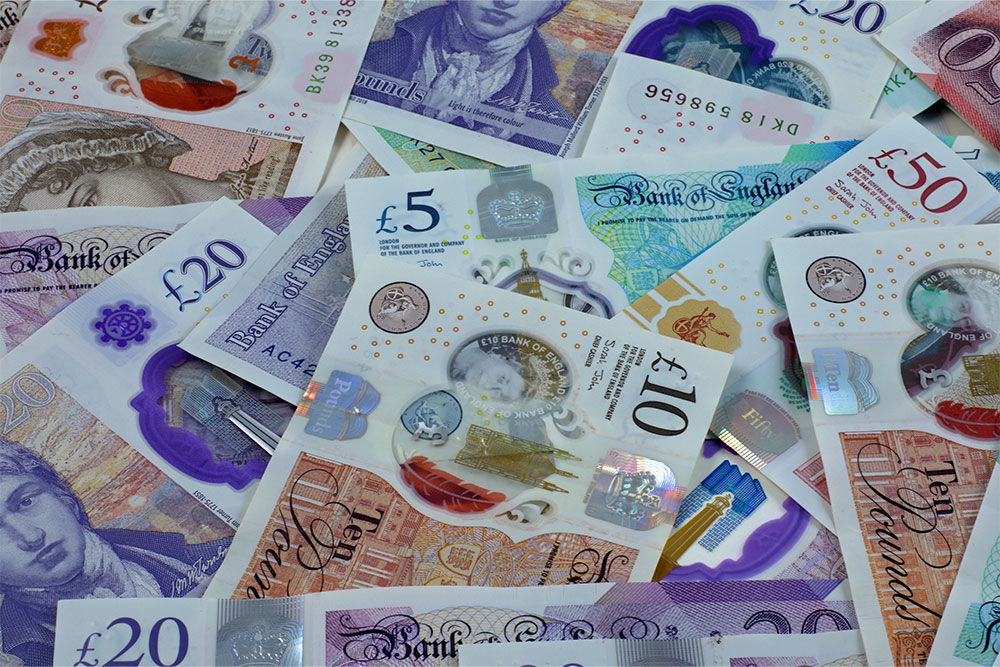
Money laundering is a term we hear often, usually in connection with fraud or big corruption scandals. But what does it really mean, how does it happen and most importantly, what does it cost us?
Money laundering isn’t just a problem for banks or the police to worry about. It affects everyone through higher taxes, rising property prices and increased crime.
This blog explores the real cost of money laundering and why it matters to every UK resident.
What is Money Laundering?
Money laundering is the process of making “dirty” money appear “clean”.
Criminals generate profits through illegal activities like drug trafficking, fraud, corruption or tax evasion. But they can’t just walk into a bank and deposit large amounts of cash without raising suspicion. So, they “launder” the money, disguising its origin so it can be used freely.
This process usually has three stages:
1. Placement
Placement is entering illegal cash into the financial system in a way that doesn’t draw attention.
Since banks must report suspicious deposits, criminals use the following tactics to avoid detection:
- Structuring: Breaking up large sums into smaller deposits.
- Mixing with legitimate income: Using cash-heavy businesses like restaurants to hide illegal money.
- Using “mules”: Getting others to deposit the money.
- Buying valuables: Jewellery, cars, art or other high-value items that can be resold later.
- Gambling: Buying casino chips, placing small bets, then cashing out.
2. Layering
Once the money enters the system, it’s moved through a series of transactions designed to obscure its criminal origin. Each transaction creates a new “layer” that distances the funds from the initial crime. The more layers added, the harder it becomes for authorities to trace the money back to its source.
Some layering techniques include:
- Transferring funds between multiple accounts or across borders.
- Using shell companies in tax havens to disguise ownership.
- Investing in cryptocurrency for anonymous movement.
- Hiring professionals to create fake investments or tax schemes.
- Falsifying trade invoices to move money under the cover of international commerce.
The goal is to confuse investigators and make the money almost impossible to trace.

3. Integration
This is the final step in which the “cleaned” money is reintroduced into the economy in a way that it appears to come from a legal source. This money can now be used without raising suspicion.
Common methods of integration include:
- Buying property or investing in businesses.
- Purchasing luxury items like jewellery or artwork.
- Creating fake loan repayments or dividends to justify the income.
At this point, the money blends in with legitimate wealth and is difficult to recover.
Is Money Laundering a Problem in the UK?
The UK is seen as a global financial hub. This status is generally a good thing, but it also makes us a prime target for money launderers. According to the National Crime Agency, over £100 billion of criminal proceeds are laundered through the UK each year.
It’s hard to pin down an exact figure because, by its nature, money laundering is hidden. Likewise, its full impact on the economy is hard to measure. However, estimates suggest it costs the UK close to £100 billion each year through lost tax revenue, inflated property prices, enforcement expenses and other indirect effects.
Anti-Money Laundering Training
Our Anti-Money Laundering (AML) course is designed to help businesses control money laundering risk by providing the workforce with essential knowledge to identify, prevent, and report suspicious financial activities. Users will also learn the key money laundering legislation and how to comply with it.
Who Is Laundering Money in the UK?
While money laundering is typically associated with criminals who deal in cash, this isn’t exclusive.
Here are a few common sources of dirty money:
- Organised crime groups – Drug trafficking, human trafficking, weapons smuggling.
- White-collar criminals – Fraudsters, embezzlers and corrupt officials.
- Tax evaders – Individuals and businesses hiding money offshore.
- Terrorist groups – Using money laundering to fund and hide financial support.
Surprisingly, laundering sometimes happens through legitimate institutions like law firms, estate agents, accountants and banks.
What Is the Actual Cost of Money Laundering?
1. Economic Damage
Money laundering hurts the economy.
Criminals use laundered money to buy businesses, not to make fair profits but to hide their illegal earnings. This creates unfair competition that can push honest businesses out.
2. Higher Public Costs
When government contracts are influenced by dirty money, taxpayers lose. Public funds can be wasted on low-quality services or stolen through fraud.
3. Undermining Trust in Institutions
Money laundering erodes trust in institutions.
If people believe criminals can use laundered money to buy power or avoid punishment, it undermines confidence in the justice system and democracy.
4. Funding Other Crimes
Illegal money often comes from violent or exploitative crimes, like human trafficking or fraud. Once laundered, these illicit funds are often used to expand criminal operations and harm more victims.
Money Laundering and the Property Market
One of the sectors most affected by money laundering is property.
UK real estate – particularly in London – has become a favoured destination for illicit funds. Criminals purchase high-end properties not as homes, but as secure assets to store their money. Many of these properties remain unoccupied for years, contributing to the UK’s housing crisis.
These purchases can also inflate prices or create artificial bubbles, making it harder for everyday buyers to afford homes.
In response, the government introduced the Register of Overseas Entities in 2022. This legislation requires foreign buyers to disclose their ultimate beneficial owners. While it represents progress, significant gaps in enforcement and transparency remain.
Who Is Fighting Back?
Several UK agencies play key roles in combating money laundering:
- The National Crime Agency (NCA) investigates organised crime and financial offences.
- HM Revenue and Customs (HMRC) enforces anti-money laundering regulations across multiple sectors.
- The Serious Fraud Office (SFO) handles the prosecution of complex financial crime cases.
- The Financial Conduct Authority (FCA) regulates financial services and oversees compliance within crypto platforms.
- Regional police forces support investigations and enforcement at a local level.
The private sector plays a big role too. Banks, law firms, estate agents, accountants and even art dealers must comply with anti-money laundering (AML) laws. They must check where money comes from, verify identities and report suspicious activity. If they don’t, they risk huge fines and, in some cases, criminal prosecution.
What Can Be Done?
Tackling money laundering isn’t easy, but progress is being made. The UK government has introduced new laws, including the Economic Crime (Transparency and Enforcement) Act 2022, with more reforms on the way.
Some key improvements include:
- A stronger Companies House to verify business owners.
- Greater transparency in offshore property ownership.
- Better data sharing between the public and private sectors.
- Tougher sanctions on enablers and facilitators.
The Role of Training
Money laundering doesn’t just harm the wider economy; it directly impacts businesses.
Organisations that unknowingly handle illicit funds or don’t report suspicious activity may face investigation and enforcement action. That’s why anti-money laundering training is important. It helps staff recognise potential money laundering and take appropriate action before any laws are breached.
If you’re looking to protect your business from illicit financial activities, our Anti-Money Laundering Training can help. The course will equip you and your staff with the knowledge to spot suspicious behaviour and stay compliant with AML regulations.
The course covers:
- Basics of AML
- The risks and consequences of money laundering
- How to spot red flags and identify potential money laundering activities
- Essentials of anti-money laundering policies
- Legal frameworks and compliance requirements under UK law
- Practical steps to prevent and report suspicious activity
Enrol now and help protect your business from financial crime.





















